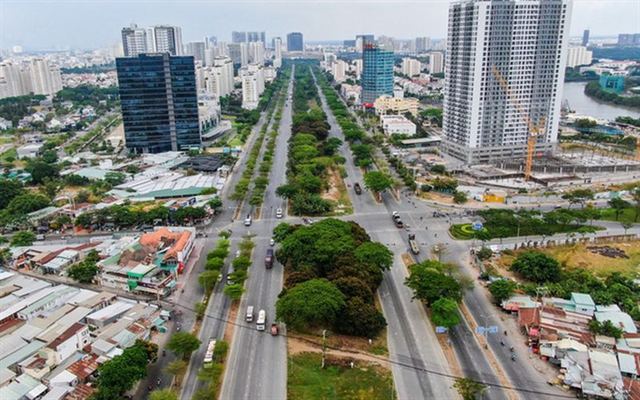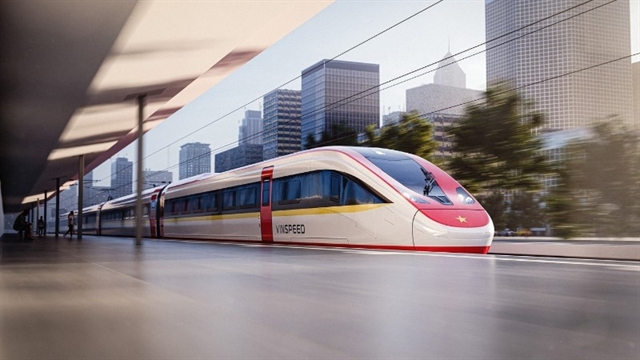 Society
Society

HCM City should develop a master plan to urbanise its five outlying districts of Hóc Môn, Bình Chánh, Nhà Bè, Hóc Môn, and Cần Giờ by 2030, a former legislative chief has said.

|
| HCM City’s suburban district of Nhà Bè. The city plans to make it and other outlying districts of Hóc Môn and Bình Chánh urban districts (or cities within HCM City) by 2025 and Củ Chi and Cần Giờ districts by 2030. VNA/VNS Photo Mạnh Linh |
HCM CITY — HCM City should develop a master plan to urbanise its five outlying districts of Hóc Môn, Bình Chánh, Nhà Bè, Hóc Môn, and Cần Giờ by 2030, a former legislative chief has said.
Nguyễn Thị Quyết Tâm, ex-chairwoman of the city People’s Council, said even after those new five urban districts are formed, it was still important to promote the application of science and technology in agriculture in the urban districts.
Võ Phan Lê Nguyễn, vice chaiman of the Nhà Bè People’s Committee, said in recent years his district has significantly urbanised, and it would strive to increase average incomes and improve healthcare and infrastructure to become a full-fledged urban district.
It plans to become an urban district by 2025, he said.
Priority would be given to improving Lê Văn Lương, Nguyễn Hữu Thọ and Huỳnh Tấn Phát streets to improve the traffic situation in the district, he added.
It targets development of “green and sustainable” urban areas, and strict management of lands along rivers, canals and other water bodies.
The Department of Natural Resources and Environment has issued a land-use plan for the next five years for the district to effectively use its land resources.
Nhà Bè will speed up construction of the Nhơn Đức - Phước Kiển new urban area and housing on Nguyễn Hữu Thọ and Nguyễn Bình streets, and develop “green” tourism in Long Thới and Nhơn Đức communes, according to Nguyễn.
Dương Hồng Thắng, chairman of the Hóc Môn People’s Committee, said the road infrastructure remains poor in his suburban district. Many roads even lack drainage, medical services are overloaded and schools and cultural establishments have not kept up with urban requirements, he said.
The district is soliciting investment in roads in 23 areas covering more than 2,600 hectares, mostly farm lands, and there are already 20 interested investors, he said.
Hóc Môn too plans to develop a roadmap to become an urban, modern district by 2030.
Lê Minh Dũng, secretary of the Cần Giờ Party Committee, said with its mangrove eco-systems and world biosphere reserve status the district aims to develop urban eco-tourism. “Cần Giờ also has an ambitious goal of becoming a city within HCM City by 2030.”
Dr. Võ Kim Cương, former deputy chief architect of the city, said whether they live in suburban or urban districts people are most concerned about what would benefit them in terms of living standards.
Lê Hoàng Châu, chairman of the HCM City Real Estate Association, said transformation of the five suburban districts into urban districts would benefit all (the State, businesses and residents).
For instance, the change in land-use purpose from agricultural to non-agricultural would bring higher investment efficiency as one hectare would bring the city revenues of VNĐ55 million a year in the case of the former but up to VNĐ400 billion (US$17.21 million) in the case of the latter.
The Department of Home Affairs has submitted a plan to turn the five suburban districts into urban districts in 2021-30 to the municipal People’s Committee.
Hóc Môn, Bình Chánh and Nhà Bè will become urban districts (or cities within HCM City) by 2025 and Củ Chi and Cần Giờ by 2030.
They have seen rapid urbanisation in recent years, with the creation of many new urban areas, construction of expressways and improved lifestyles.
Hóc Môn spreads over more than 109 square kilometres and has a population of nearly 463,000. The corresponding figures are 252sq.km and 711,000 for Bình Chánh, 100sq.km and 208,000 for Nhà Bè, nearly 435sq.km and 468,000 for Củ Chi and 704sq.km and 73,000 for Cần Giờ. — VNS




